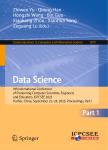Self-attention Based Multimodule Fusion Graph Convolution Network for Traffic Flow Prediction
作者机构:College of Computer Science and TechnologyHarbin Engineering UniversityHarbinChina
出 版 物:《国际计算机前沿大会会议论文集》 (International Conference of Pioneering Computer Scientists, Engineers and Educators(ICPCSEE))
年 卷 期:2022年第1期
页 面:3-16页
学科分类:0809[工学-电子科学与技术(可授工学、理学学位)] 08[工学]
基 金:supported by the National Key R&D Program of China under Grant No.2020YFB1710200 the National Natural Science Foundation of China under Grant No.61872105 and No.62072136.
主 题:Flow prediction Temporal-spatial correlation Graph convolution network Self-attention mechanism
摘 要:With rapid economic development,the per capita ownership of automobiles in our country has begun to rise year by year.More researchers have paid attention to using scientific methods to solve traffic flow problems.Traffic flow prediction is not simply affected by the number of vehicles,but also contains various complex factors,such as time,road conditions,and people flow.However,the existing methods ignore the complexity of road conditions and the correlation between individual nodes,which leads to the poor performance.In this study,a deep learning model SAMGCN is proposed to effectively capture the correlation between individual nodes to improve the performance of traffic flow prediction.First,the theory of spatiotemporal decoupling is used to divide each time of each node into finer particles.Second,multimodule fusion is used to mine the potential periodic relationships in the data.Finally,GRU is used to obtain the potential time relationship of the three modules.Extensive experiments were conducted on two traffic flow datasets,PeMS04 and PeMS08 in the Caltrans Performance Measurement System to prove the validity of the proposed model.



